Image by Mike Baylon
In the second half of the 1990’s, Pagadian was a bustling port. It then had overnight ferries from three shipping companies (Sampaguita Shipping, Aleson Shipping and SKT Shipping) to Zamboanga City. Some of these were really good (Sampaguita Shipping used former liners along with the MV Pagadian City of SKT Shipping). There were also big multi-deck motor boats with outriggers to Cotabato City and Malabang, Lanao del Sur. And then there were Weesam Express fastcrafts to Zamboanga City (some call on Subanipa on the way there). For a short time, there were Weesam Express fastcrafts, too, to Cotabato City. There were also many fishing vessels and fishing bancas using the port as fishing in Illana (Iranun) Bay and off the coast of Zamboanga del Sur was a profitable venture. A few trampers were also calling on the port.
The late afternoons and early evenings were busy time for the port. There was really a bustle of activity as passengers were arriving to board. Cargo is also being handled (or shall I saw manhandled?). The motor boats have their own people trying to coax the would-be passengers to their ships and they are more than willing to lug the passengers’ baggage and effects for free. Since these are overnight journeys, the whole stretch of street going to the port was filled with eateries and ihaw-ihaws and its smoke and smell dominate the air along with the calls from the food servers. Tricycles were also always running and the Pagadian type are a noisy bit (no mufflers for added power on the steep Pagadian hills).
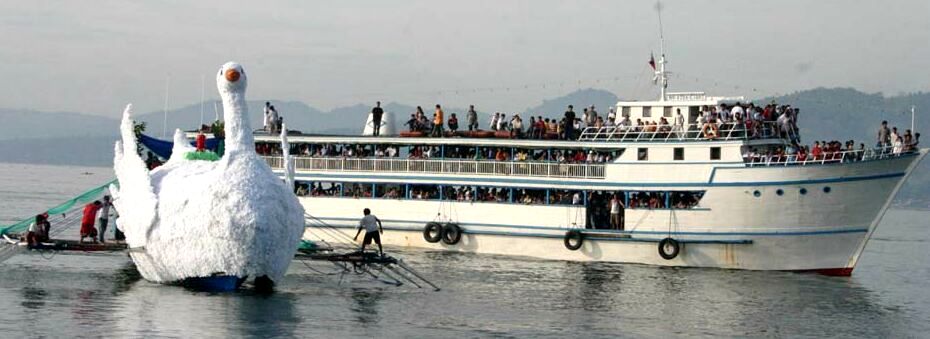
A big motorboat connecting Cotabato and Pagadian © http://www.pagadian.org via rrd5580/Flickr
In those days I try to go to Pagadian Port. I have no business. I just want to soak the port activity (and get some port stories, too, and try to board just for a look), the dying rays of the sun and look for authentic Saray lanzones, one of the best and comparable to Camiguin lanzones.
The early morning is a busy time, too, for the port. The overnight ferries from Zamboanga City will have arrived and there is the usual bustle and hustle of the unloading of cargo including shrieks of owners if their own is getting damaged or is not being handled properly. The motor boats from Cotabato and Malabang will have also arrived, too. Meanwhile, the Weesam fastcraft will be readying for departure. Fish is also being loaded but it is already the tailend of the business because their activity starts earlier since the fish trucks have a long way to travel.
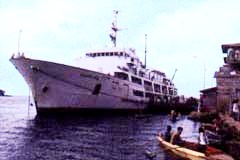
M/V Pagadian City of SKT Shipping © actionasiaphoto via rrd5580
Outside the port gates there will be the usual stalls serving breakfast but the smell that will dominate the scene in the morning were the stalls selling dried fish. Pagadian is a renowned dried fish center and its source is Zamboanga City and even beyond. Moro boats from as far as Sulu and Tawi-tawi go to Pagadian and they also bring barter goods. Among the mix inside and outside the gate are hawkers selling “pasalubong” and a myriad of many other minor items.
Overnight ferries were doing good sailing from Pagadian then because the road to Zamboanga City was still very bad and the bus ride before was long, bone-jarring and dusty. There is also the occasional brigandage and kidnapping and inclement weather turning the unpaved road into mush. Those who were possible targets of attacks would definitely take the overnight ferry than risk and that included businessmen and government officials. With airconditioned accommodations and bunks (also cabins), it sure beats the ordinary bus (there was no airconditioned bus then). The good ships were also a nice place for sundowners.

Meanwhile, going to Malabang, Balabagan and Cotabato there was simply no road before and the only link really were the motor boats. There was no other choice for the travelers. Some of those going to Davao also take the motor boats and then transfer to a bus rather than take the longer and more expensive land ride via Cagayan de Oro. That route then was not more comfortable either because after CMU (Central Mindanao University in Bukidnon) it was rough road all the way to Marilog in Davao. Meanwhile, the Cotabato-Davao highway is well-paved and shorter compared to that. And if the traveler is going to General Santos City, then going via Cagayan de Oro is simply too circuitous.
However, things change and that is one of the laws of nature. Starting the new millennium, the highways began to be completed. The road going to Zamboanga City got cemented bit by bit after a long wrangling. With it brigandage was controlled and the ride became smoother although not faster. Soon the bus to Zamboanga City were rolling 24 hours and airconditioned buses were already available, too. Not long after, the overnight ferries to Zamboanga City began distressing. It was not only passengers that shifted to land travel but trucks also began rolling. The fastcrafts have also gone away and moved to the Visayas even sooner but their departure was not connected with the cementing of the highway (other factors played).
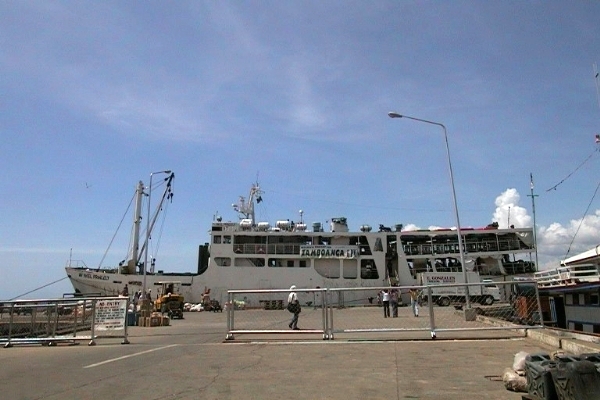
M/V Nikel Princely, a Pagadian-Zamboanga ferry © pagadian.com via Mike Baylon
A little later after this development, the highway to Cotabato became a reality. It took much longer as it was a brand-new road and a war has to be waged first. Soon, even though cementing was not yet finished and security leaves much to be desired, the vans started rolling on the new highway. Actually, lack of security mainly affected the Christians, not the Muslims unless they have “rido”. Soon, the motor boats were on the way out. Travelers won’t wait until night for the boats to sail when at all hours of the daytime there are vans leaving. It is actually the vans which can’t travel at night because of the security situation. Whatever, the 3 or 4-hour van ride trumped the 6-hour motor boat ride. Being a new road, the new sights and the lure of traveling to new places are big incentives.
Now, the Pagadian port is just but a shadow of its former self. All the overnight ferries to Zamboanga are long gone now and two of three of their operators have already gone under. Ditto for the motor boats for Cotabato and Malabang which were laid up one after the other. Buses going west (to Zamboanga) are simply too many and vans with connecting rides are also a possibility. Going east (to Cotabato and Malabang) there are no buses and even until now. Only commuter vans roll in the highway here. More and more, Christians have less fear threading the path there.
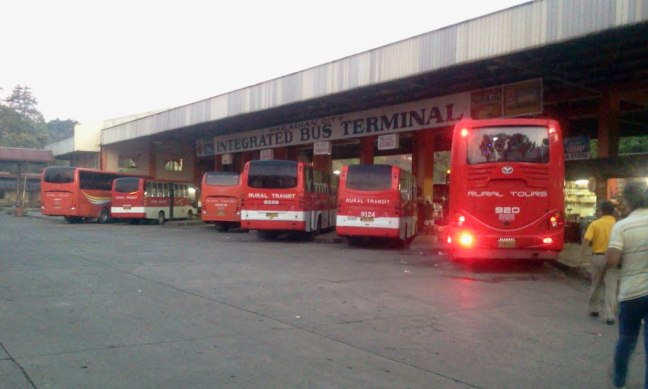
Today, Pagadian Port is just a dusty port with almost no users except for the fishing vessels and some occasional trampers. There is no more bustle of activity and practically no hum of commerce except for fish unloading and trading. The food stalls are gone now and the dried fish stalls have been halved. The people milling around is just but a small fraction of what it was before and the port is no longer a major tricycle destination.
The experience of Pagadian Port is just an affirmation of what I have observed long ago that ships cannot compete with buses (and vans) and trucks on parallel routes. Even though the overland trip is sometimes longer still it trumps the sea route. Ships are just few, their hours are inflexible and sometimes they don’t sail (especially when drydocked). Buses and vans roll many hours and this is flexibility and options for the commuter. It also means the possibility of getting off the ride in front of his house or the establishment (or office) he needs to go to.
I have been asked if Pagadian Port can rise again. My sad answer was “No”.
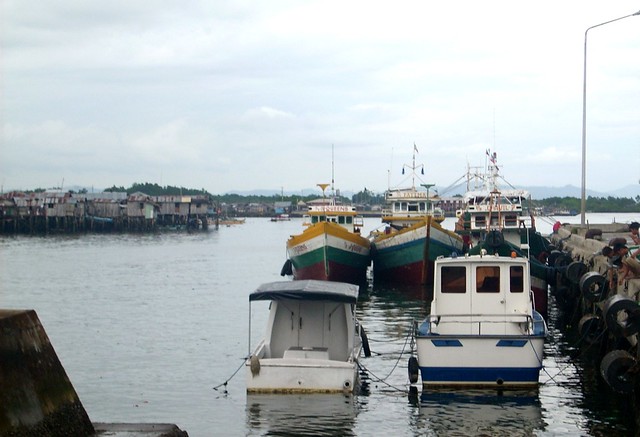
Pagadian Port, circa 2009 © Mike Baylon

